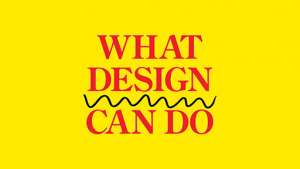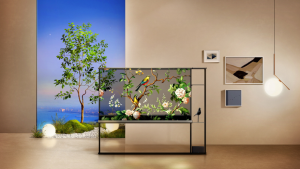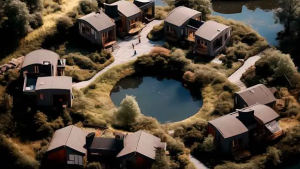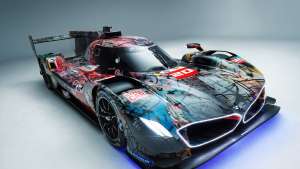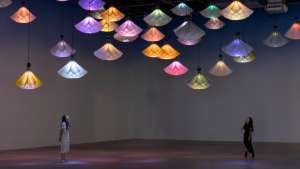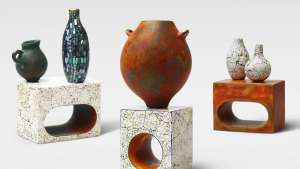From the Series
Founded by Michael Uwemedimo and Simon Kennedy, the Collaborative Media Advocacy Platform (CMAP) uses a collaborative, multimedia approach to uplift the voices of marginalised communities in Africa. The initiative has spearheaded projects like The Human City Project, a community-driven media, architecture, planning and human rights movement in Nigeria, and People Live Here, a media campaign involving Amnesty International, disadvantaged communities and CMAP in Port Harcourt, Nigeria. The aim of the People Live Here campaign was to end forced evictions and give people in slum communities a chance to have their grievances heard.
Initiatives like CMAP bring to the fore a pressing problem in Africa. As a rapidly developing continent, the income gap between the rich and the poor is ever increasing. We spoke to Uwemedimo about how media platforms can garner much-needed attention for marginalised communities and how these communities could one day shape Africa.
Born in Nigeria, Uwemedimo is also Senior Visiting Research Fellow at King’s College London and a founding member of the filmmaking collaboration, Vision Machine. He has produced the award-winning documentary The Act of Killing.
How does CMAP envision the lives of marginalised communities can be changed by design?
Although the communities we work with are in many ways politically and socially marginalised, it is communities like these that are shaping the face of cities across the continent.
We are sharing skills and technologies that allow people in informal settlements to organise more effectively, plan more appropriately and to reach the city with their voice and vision.
Image-making, storytelling and design processes can be useful. With the means to tell their stories on film, on air and in court, charting their reality on maps and describing their visions in urban action plans, people in marginalised communities we work with are changing their lives and shaping their city.
Design offers tools and approaches. For us design process and designed objects are means of contributing to broader political and social change - we are interested in designing buildings, but more interested in building movements.
The People Live Here campaign wants to change the way people see their city. How does it believe people’s perceptions of informal areas can be changed? What is the role of government in this process and what is the role of design?
Around 80 per cent of population growth in Africa is urban growth and of that, 80 per cent is informal slum growth. Being a young, disenfranchised slum dweller is the core urban condition. There is a broad social and political disavowal of this reality. Massive informal settlements are shaping our cities yet they remain in many ways invisible.
We wanted to make the faces of some of the people who live in some of these communities visible. We raised them high above the streets. We hired billboards often reserved for the promotion of household detergents or politicians and pasted massive portraits of people who live in communities threatened by forced eviction. We ran a simple message: People Live Here. We wanted to create a space in which the city could identify with itself, recognise itself, recognise its own face. Many voices make a city. We wanted to start a conversation about the future of our city that was rooted in its contemporary reality.
Do you believe the government has been reluctant to harness the power of design to effect change?
What are the changes we want to effect with design? Who are we designing our cities for? What values should our public spaces embody? Who is allowed in? Who is locked out? Who can move where and how?
These might be questions design processes need to address. They are all already political questions. Politics precedes design. Or rather, political considerations pervade all design processes.
The key issue for our government representatives regarding urban design is one of political will. Design approaches can offer elegant solutions to particular problems, but they all involve the allocation of resources. How those resources are allocated is at heart a political question. This question leads us to the core issue posed by our continent’s cities: the social violence of massive inequality.
In response to this, we need to ask what are the relationships between ownership and belonging in our cities? In cities where ownership of public space is ever more concentrated in private hands, how can design serve to create cities in which we all can profoundly belong?
If our governments are reluctant to harness the power of design to make our cities places in which we all belong and can flourish, then it is the power of political organising that must change our governments.
What drove you to devote your life to advocacy for social change? Why Nigeria?
Why Nigeria? Because I grew up here, because I live here, because I can make interesting and important work here. I’m lucky enough to be working with talented and committed people on a fascinating project.
There’s still a great deal to do on the Human City Project before thinking about what’s next, but what’s next will certainly involve and camera, a pen, some books and some people I love.
Do you believe design has the power to change people’s perceptions? Specifically, people in power?
Design is often purposed to change perceptions. Sometimes to change how we perceive washing powder, sometimes how we perceive a political party; perhaps how we perceive our own bodies or our planet. Design processes can support marginalised groups become more vocal or support dominant groups consolidate their dominance. Certainly, it’s important to change who we perceive are the people in power.
We set out to change the way slum communities perceive themselves and are perceived by the rest of the city.
More than anything we hope people in marginalised communities come to recognise themselves as political actors and to sense the tremendous power they can gain through organising.
Are you, or the organisation, working on any new projects?
We’re launching a new music programme, “Sessions in the Shed.” We’re excited about the relationships between music making and movement building.
The annual What Design Can Do conference was established in 2010 to encourage creatives from all over the world to seek out design solutions to the world’s problems. This year, the conference will be held on 30 June and 1 July at the Muziekgebouw aan 't IJ in Amsterdam. Uwemedimo is expected to speak on media advocacy under the theme, “What Africa can do for Europe”. Find out more about the conference, its themes and its expert list of speakers here.

